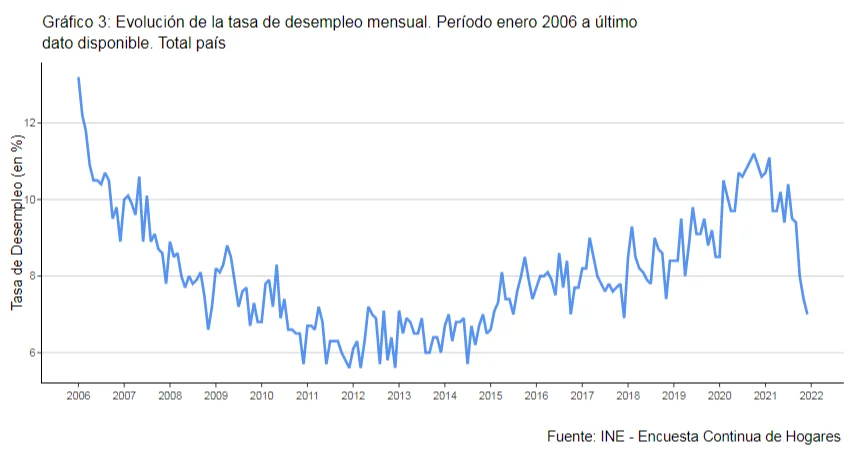Year 2021 closed with 87 thousand jobs more than in the same month of the previous year, according to the survey released by the National Institute of Statistics (INE) this Tuesday. In December, the activity rate stood at 62%, the employment rate at 57.7% and the unemployment rate at 7%.
The figures indicate that Compared to November, there were 9,000 more jobs last month, while on average for the year there were 49,000 employed above 2020, economist Aldo Lema wrote on his Twitter account. In this way the country practically recovered from the shock caused by the pandemic during its first year (2020). That year there were about 59,000 fewer employed people on average than in 2019, which added to the destruction of another 50,000 jobs in the previous five years.
The numbers released by the INE indicate that in Uruguay the active population —made up of all the people integrated into the labor market, employed or looking for work— is around 1,798,700 inhabitants. Of this set, 1,672,200 are employed and 126,400 are unemployed. Among the employed, the INE estimated that 9.2% are underemployed and there is no social security record for the main activity of 21.8% of the workers.
In addition, published data show the best unemployment figure since 2017 and employment exceeded the level of January 2020, even if total activity is still one percentage point below that of February of that year.

However, it is noteworthy that the last years before the pandemic represent a relatively undemanding point of comparison, because the figures for all labor market indicators already showed a negative trend.
The Ministry of Economy and Finance (MEF) expects that another 40,000 jobs can be created this year.
What do the activity, employment and unemployment rates mean?
According to the official methodology, the activity rate measures the proportion of people who are active (working or looking for work) among those aged 14 and over, which is what the INE takes as the Working Age Population (PET).
For its part, the employment rate represents the proportion of people who declare to work in relation to the PET.
Finally, the unemployment rate records the proportion of people who are looking for work and do not have one, in relation to the entire Economically Active Population (PEA), that is, to the sum of employed and unemployed.
As employment is measured on the PET and unemployment on the PEA, the sum of both (57.7% and 7% each) does not coincide with the activity rate (62%).
It is important to note these methodological differences because in crises it usually happens (like this time) that unemployment recovers faster than employment: it turns out that under unfavorable circumstances there is a margin of people who give up looking for work, so they are not listed as unemployed. they are called discouraged workers Y although they are not reflected in unemployment, they are noticeable in lower levels of employment.















